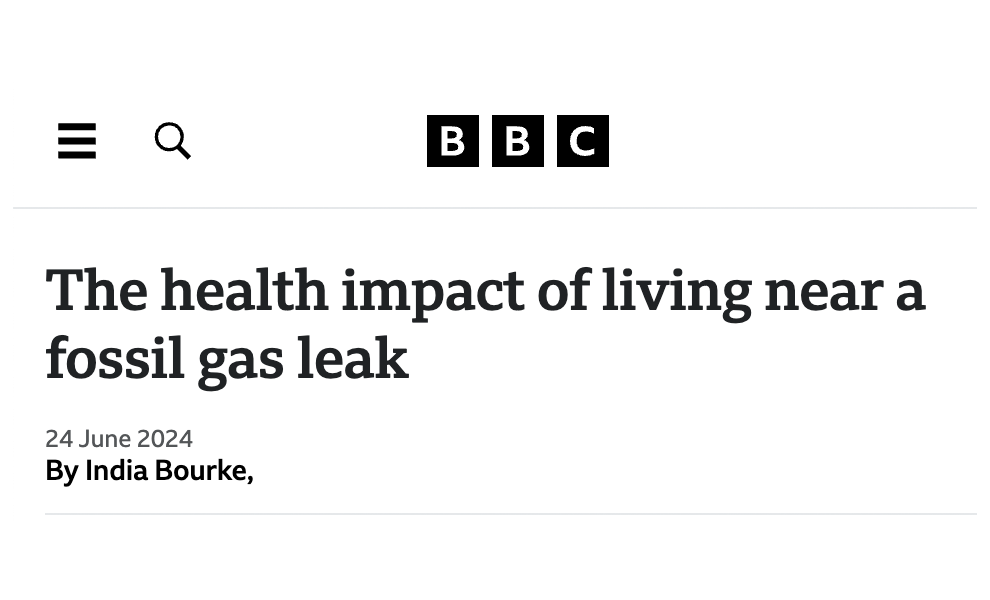BBC: The health impact of living near a fossil gas leak – by India Bourke
Methane is the easiest substance to detect within gas’s many compounds, says Shonkoff: if you map the release of methane, you’ll nearly always catch the other chemicals, too. However, methane monitoring is not a given: “we don’t accurately know how much methane is leaking, either in the US or globally,” says Jeni Miller, executive director of the Global Climate and Health Alliance. New technology is helping to map this threat.
On the ground, FLIR optical gas imaging cameras use infrared to spot leaks of methane that are invisible to the naked eye. Above the Earth’s atmosphere, satellites are using emerging sensing technology to alert leaks on an ever more detailed scale: in March, the Environmental Defense Fund launched MethaneSat, which experts say will aid data collection on methane emissions from the fossil fuel industry.
Together, these advances in detection should support the development of improved assessments and solutions to leaky infrastructure – from repair to replacement – says Miller.
…
Phasing out fossil fuels is the surest way to reduce natural gas’s toxic threat, Miller and others say. But the transition to 100% clean energy sources will take time. So numerous groups are also pressing for facilities near neighbourhoods and communities to be removed, and for the energy sector to rapidly reduce methane emissions from existing production, something that can be done quickly and at low or no net cost, says Miller.

